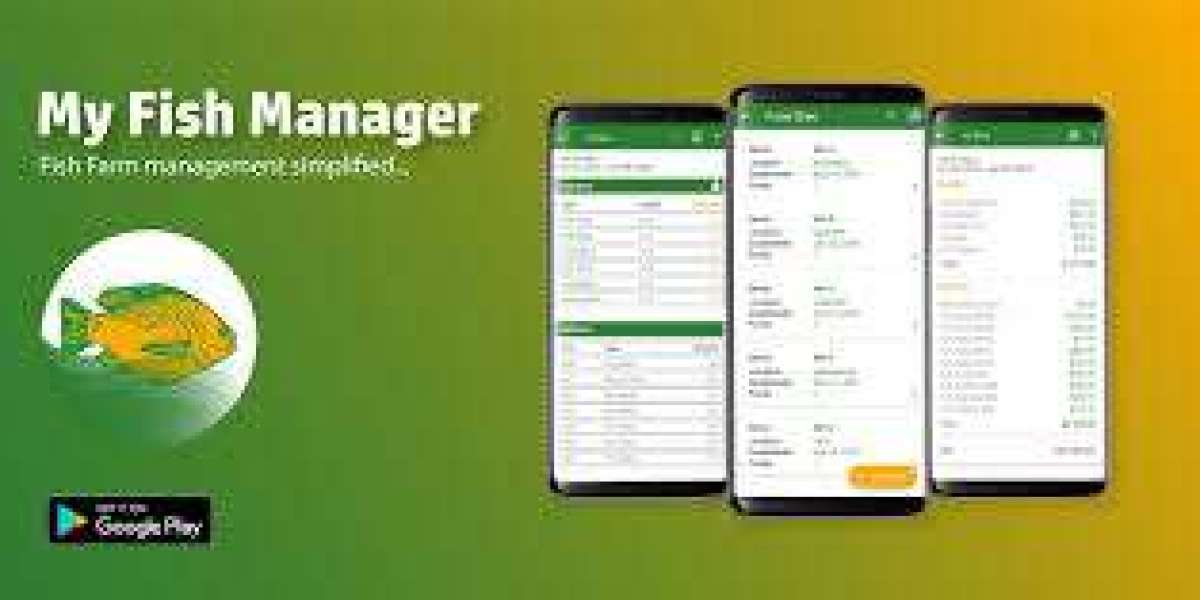Introduction
The aquaculture industry is booming, with global fish production reaching 178 million metric tons in 2021 (FAO). However, managing a fish farm efficiently requires precision, data-driven decisions, and streamlined operations. This is where fish farm management software comes in—a powerful digital tool designed to automate, monitor, and optimize aquaculture operations.
Whether you run a small-scale tilapia farm or a large commercial salmon operation, this guide will help you leverage technology for higher yields, reduced costs, and sustainable practices.
What is Fish Farm Management Software?
Fish farm management software is a specialized digital platform that helps aquaculture businesses track, analyze, and optimize their operations. From water quality monitoring to feed management and inventory tracking, this software provides real-time insights to improve efficiency.
Why Do You Need Fish Farm Management Software?
- Manual processes are error-prone – Spreadsheets and paper records lead to inefficiencies.
- Regulatory compliance is complex – Software ensures adherence to environmental and food safety standards.
- Profitability depends on precision – Optimizing feed, health, and growth cycles maximizes ROI.
According to a 2023 report by MarketsandMarkets, the global aquaculture software market is projected to grow at a CAGR of 12.4%, reaching $1.2 billion by 2028, driven by the need for automation in fish farming.
Key Features
Not all aquaculture software is created equal. Here are the must-have features to look for:
1. Real-Time Water Quality Monitoring
- Tracks pH, dissolved oxygen, temperature, and ammonia levels
- Alerts for abnormal conditions to prevent fish mortality
2. Feed Management & Optimization
- Calculates optimal feeding schedules
- Reduces feed waste, lowering operational costs
3. Inventory & Stock Tracking
- Monitors fish growth rates, biomass, and stock levels
- Helps in planning harvests and sales
4. Disease & Health Management
- Logs health records and disease outbreaks
- Recommends treatments to reduce losses
5. Financial & Business Analytics
- Tracks expenses, revenues, and profitability
- Generates reports for better decision-making
6. Compliance & Certification Support
- Ensures adherence to ASC, BAP, and GlobalG.A.P. standards
- Simplifies audit preparations
7. IoT & Sensor Integration
- Connects with smart sensors, drones, and automated feeders
- Enables remote farm monitoring via mobile apps
Benefits
1. Increased Operational Efficiency
Automating tasks like feeding schedules, water testing, and inventory tracking reduces labor costs and human errors.
2. Improved Fish Health & Survival Rates
Early detection of diseases and optimal water conditions lead to higher survival rates and better yields.
3. Cost Savings & Higher Profitability
- Reduces feed waste by up to 20% (FAO)
- Optimizes energy and resource usage
4. Data-Driven Decision Making
Historical and real-time analytics help farmers make smarter breeding, feeding, and harvesting decisions.
5. Sustainability & Environmental Compliance
Helps farms meet ESG (Environmental, Social, and Governance) goals by minimizing ecological impact.
Top Fish Farm Management Software Solutions
Here are some of the best aquaculture software options available today:
1. AquaManager
- Best for: Large-scale fish farms
- Features: Feed optimization, biomass tracking, compliance reporting
2. FarmERP Aqua
- Best for: Integrated aquaculture & ERP needs
- Features: Financial analytics, IoT integration, supply chain management
3. XpertSea (Now part of Aquaconnect)
- Best for: Shrimp and small-scale farms
- Features: AI-based growth tracking, inventory management
4. AKVA Group
- Best for: Offshore and marine aquaculture
- Features: Cage management, environmental monitoring
5. Aquabyte
- Best for: AI-driven salmon farming
- Features: Machine learning for lice detection, biomass estimation
How to Choose the Right Fish Farm Management Software
When selecting software, consider:
✅ Farm Size & Species – Some tools specialize in shrimp, salmon, or tilapia.
✅ Scalability – Can it grow with your business?
✅ Integration Capabilities – Does it work with existing sensors/equipment?
✅ User-Friendliness – Is the interface intuitive for workers?
✅ Cost vs. ROI – Will the software pay for itself in efficiency gains?
Future Trends in Aquaculture Software
- AI & Machine Learning – Predictive analytics for disease outbreaks.
- Blockchain for Traceability – Ensures transparency in seafood supply chains.
- Automated Drones & Robotics – For feeding and monitoring large farms.
FAQs
Q: How much does fish farm management software cost?
A: Prices range from
50/month for basic plans∗∗to∗∗
50/month for basic plans∗∗to∗∗500+/month for enterprise solutions, depending on features.
Q: Can small-scale fish farmers benefit from this software?
A: Absolutely! Many affordable solutions cater to small and mid-sized farms.
Q: Does this software work for shrimp farming?
A: Yes, tools like XpertSea and Aquaconnect specialize in shrimp aquaculture.
Final Thoughts
Investing in these farm management software is no longer optional—it’s a competitive necessity. By leveraging automation, real-time data, and AI-driven insights, modern fish farms can boost productivity, ensure sustainability, and maximize profits.
Ready to transform your aquaculture operations? Explore the top software solutions mentioned above and take the first step toward a smarter, more efficient fish farm.


